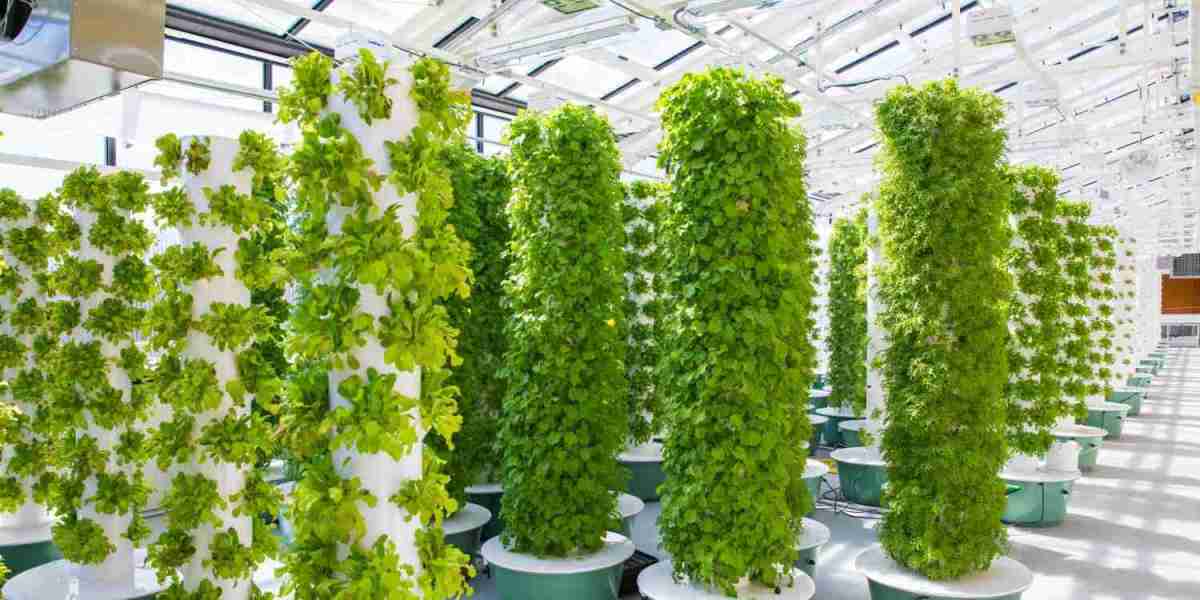The aeroponics market has garnered considerable attention in recent years due to its promise of water efficiency, higher yields, and sustainable urban farming. However, alongside its notable advantages, the industry faces several inhibitors that are preventing its widespread adoption. These challenges range from high capital expenditures to operational complexity, limiting its reach beyond niche markets and research environments.
Understanding these inhibitors is crucial to overcoming barriers and enabling broader implementation of aeroponics as a mainstream agricultural solution.
1. High Initial Investment Costs
One of the most significant barriers to aeroponics adoption is the high setup cost associated with commercial-scale systems. Establishing an aeroponics facility requires specialized equipment, including:
Misting nozzles and pumps
Climate control systems
LED grow lighting
Monitoring sensors for temperature, humidity, and nutrient delivery
Power backup systems and control units
These components are often expensive, particularly when sourced from international manufacturers. For small- and mid-sized farmers, this initial financial burden may be prohibitive. While long-term savings through water and fertilizer efficiency are possible, the upfront investment remains a major obstacle, especially in developing economies or rural regions.
2. Technical Complexity and Skill Gaps
Aeroponic systems are technologically advanced and require detailed knowledge of plant biology, nutrient chemistry, and environmental management. Unlike traditional soil farming, aeroponics demands precise control over variables such as mist intervals, nutrient concentration, root oxygenation, and ambient conditions.
A lack of trained personnel and technical expertise is a major inhibitor, particularly in regions where agricultural education and exposure to modern farming methods are limited. Farmers unfamiliar with such systems may face difficulties in setup, calibration, and ongoing management. Furthermore, technical failures—such as nozzle clogging, pump malfunction, or misting irregularities—can quickly lead to plant stress or crop loss.
3. Limited Crop Compatibility
While aeroponics excels in growing leafy greens, herbs, and certain fruits like strawberries, it is not universally suitable for all crop types. Root vegetables such as carrots or potatoes and large fruiting crops like melons require more structural support and spatial volume than current aeroponic setups typically provide.
This limitation reduces the versatility of aeroponics in addressing staple food demands. Farmers looking to produce a wide range of crops may find aeroponics restrictive compared to hydroponics or traditional agriculture, thereby inhibiting its commercial scalability across diverse agricultural needs.
4. Maintenance and System Downtime
Aeroponic systems, especially when operated at scale, require constant maintenance to function optimally. The misting mechanism, central to the process, is vulnerable to:
Mineral buildup and clogging
Pump failure due to pressure issues
Inconsistent nutrient delivery caused by sensor errors
Electrical issues affecting automated systems
Any downtime in misting can cause root desiccation in a matter of hours, leading to significant crop loss. The dependency on uninterrupted system operation places a heavy maintenance burden on operators, which may discourage investment—particularly in areas with unreliable power supply or technical support.
5. High Energy Consumption
While aeroponics saves water, it typically requires significant energy input for lighting, temperature regulation, and misting. In regions where electricity costs are high or grid stability is poor, operational expenses can reduce profit margins.
Although solar integration is possible, it requires additional capital investment. The reliance on artificial lighting, especially in indoor environments, continues to be a point of concern for cost-conscious growers. Until energy-efficient solutions become more accessible and affordable, this remains a notable inhibitor for aeroponics expansion.
6. Limited Awareness and Market Penetration
Despite growing attention in media and research circles, aeroponics is still a relatively unfamiliar concept among traditional farmers, policymakers, and rural communities. The technology’s benefits are often overshadowed by misconceptions about its complexity, cost, or applicability.
Without sufficient education, outreach, and demonstration projects, adoption will remain limited to urban entrepreneurs, academic institutions, and well-funded startups. Expanding awareness and building trust within the broader agricultural community are essential to overcoming this challenge.
7. Supply Chain and Infrastructure Constraints
The components used in aeroponic systems—such as specialized nozzles, sensors, and automation controllers—are often imported and not widely manufactured locally in many regions. This dependence leads to:
Long lead times for repairs or replacements
Higher costs due to import duties
Vulnerability to global supply chain disruptions
Additionally, areas with underdeveloped logistics and technology infrastructure may find it difficult to support such advanced farming systems. Without strong local support ecosystems, maintaining and scaling aeroponics can be daunting for new adopters.
8. Regulatory and Certification Hurdles
Aeroponics operates in a relatively new category of agriculture, and in many jurisdictions, there is a lack of clear regulatory frameworks. This absence can lead to difficulties in obtaining food safety certifications, accessing subsidies, or qualifying for agricultural grants.
Furthermore, insurance, property zoning, and import/export classifications for aeroponics-based produce remain inconsistent. Regulatory uncertainty can deter investors and businesses from fully committing to large-scale deployment.
Conclusion
While aeroponics holds immense promise for revolutionizing modern agriculture through sustainability, efficiency, and innovation, its growth is currently constrained by several inhibitors. High setup costs, technical complexity, maintenance demands, and limited crop versatility present real challenges that must be addressed through innovation, education, and policy support.
By investing in cost-effective technologies, building local manufacturing ecosystems, simplifying system operations, and spreading awareness through outreach and training, the industry can begin to reduce these barriers. With targeted solutions and stakeholder collaboration, the aeroponics market can unlock its full potential and expand into a more inclusive, resilient, and globally viable agricultural model.




